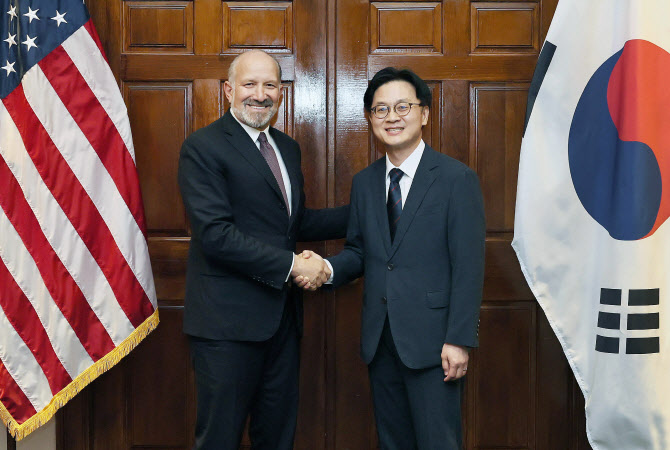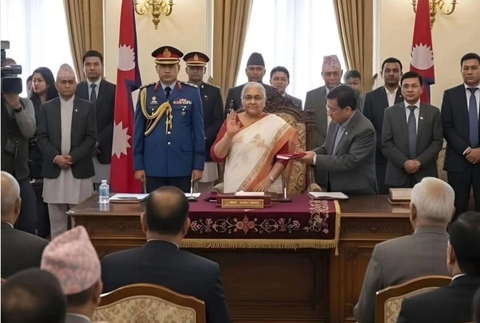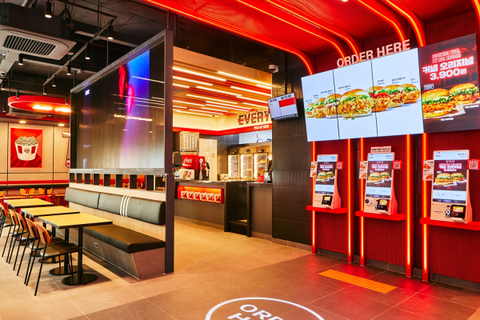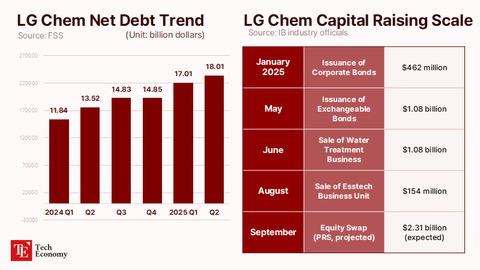"Betting on Shipbuilding as a Buzzer-Beater, Korean Government Proposes ‘MASGA’ Cooperation to U.S."
Input
Modified
Revival of U.S. Shipbuilding Strategic Check on China through Naval Power Multi-Billion Dollar Package in Investment and Financial Support

As the Korean government pushes for a last-minute tariff deal with the United States, it has proposed a massive shipbuilding cooperation project worth tens of billions of dollars. With Japan and the European Union offering large-scale investments to gain favorable tariff agreements, Korea has put forth a shipbuilding investment plan tailored to meet real U.S. needs. Shipbuilding is a key component of former President Donald Trump's U.S. manufacturing revival agenda, as well as a strategic tool to check China's maritime ambitions. Based on this industrial strategy and geopolitical calculus, Korea aims to emphasize its role as an indispensable partner to secure tariff reductions.
Shipbuilding as a Strategic Card in Tariff Talks
According to the presidential office and government ministries on July 29, Minister Kim proposed the “MASGA (Make American Shipbuilding Great Again)” project during tariff negotiations with Secretary Lutnick on July 25 at Lutnick’s residence in New York. Borrowed from Trump’s core slogan “MAGA (Make America Great Again),” the naming appears intended to amplify message resonance.
The proposal followed Japan’s agreement to lower mutual tariff rates to 15% in return for a $550 billion investment package. Secretary Lutnick reportedly noted that “after the Japan deal, there were even 'curses' from Korea,” reflecting both Korea’s sense of crisis over losing ground to Japan and the tense dynamics between the two nations. Korean trade negotiators are said to have stressed that Korea’s shipbuilding sector, being more advanced than Japan’s, has significantly more to offer the U.S.
The MASGA project encompasses direct investments by Korean private shipbuilders like HD Hyundai Heavy Industries and Hanwha Ocean in the U.S., backed by loans and guarantees. The Korean government is understood to have proposed a specific funding amount totaling tens of billions of dollars. According to the presidential office, Secretary Lutnick expressed satisfaction after hearing the MASGA proposal from Minister Kim.

Expanded Support for Ship Orders and Local Investment
Revitalizing shipbuilding is a core priority for the Trump administration. Historically, U.S. shipbuilding surged with the adoption of ironclad warships and steam engines during the Civil War and expanded further under President Theodore Roosevelt’s naval policies. However, the industry lost competitiveness from the 1980s due to subsidy cuts and excessive protectionism, reducing its global market share to below 1%.
With the prolonged decline, the U.S. now faces the need for a comprehensive rebuilding of its shipbuilding ecosystem, including equipment, infrastructure, components, and skilled labor. Notably, the University of Michigan is the only known institution offering a full academic track in naval architecture, and there’s also a shortage of hands-on labor. While advanced naval ships like aircraft carriers and Aegis destroyers barely remain afloat, the U.S. has virtually lost the capacity to build commercial ships. Of the 1,910 ships ordered globally last year, only two were contracted by U.S. shipyards.
By contrast, Korea boasts not only a skilled workforce but also rich operational and project management experience in shipyard operations. Korea also possesses advanced shipyard automation technologies such as AI welding robots and smart docks, which can minimize the need for on-site U.S. labor while boosting productivity. Given the U.S.'s leadership in AI, combining it with Korea’s capabilities could produce strong synergies.
The key challenge lies in securing large-scale funding. The Korean government is considering involving state financial institutions such as the Export-Import Bank of Korea and Korea Trade Insurance Corporation to support Korean shipbuilders entering the U.S. market. Industry insiders suggest that equity investments in aging U.S. shipyards are the most likely route. The idea is to modernize the facilities and deploy skilled Korean workers to enhance productivity.
A large U.S.-requested investment fund could also be utilized to support the entry of Korean small and mid-sized shipbuilding partners into the U.S. and to establish a local shipbuilding ecosystem. Further possibilities include Korean companies acquiring or building new U.S. shipyards. Joint construction of commercial and military vessels by Korean and U.S. yards is also on the table. HD Hyundai is already pursuing a plan with U.S. shipbuilder Edison Chouest Offshore (ECO) to co-build mid-sized container carriers at ECO’s U.S. shipyard by 2028. Hanwha, meanwhile, has begun “Korea-U.S. joint construction” by assigning LNG carriers ordered by its U.S.-based Philadelphia shipyard to Hanwha Ocean’s Geoje yard. Currently, the U.S. officially prohibits foreign construction or MRO (maintenance, repair, and overhaul) of military and commercial ships.
A Korea-U.S. collaboration model involving “modularization,” proposed by the Center for Strategic and International Studies (CSIS) in May, is also being discussed. Under this scenario, hull sections, navigation systems, and propulsion components would be manufactured in Korea in module form, then assembled in the U.S. This approach offers production efficiency while addressing the U.S.’s infrastructure and labor shortages. The agenda also includes technology exchange and workforce training. Korean experts could travel to the U.S. to provide training, or American personnel could be invited to Korea for education. By combining U.S. IT expertise with Korean manufacturing strength, the two nations could move toward developing smart shipyards and next-generation vessels.

Tailwinds for Korea’s Shipbuilding Sector — A ‘Super Cycle’ in Sight
Experts view the MASGA initiative as a solution that only a shipbuilding powerhouse like Korea can offer. For the U.S., which urgently needs to rebuild its shipbuilding industry in response to maritime competition with China, Korea — a leading rival to China in this space — represents the most realistic and attractive partner. Moreover, they argue that this cooperation goes beyond diplomatic compromise. By leveraging its shipbuilding sector as a negotiation tool, Korea could not only secure high-value ship orders in the U.S. but also establish a long-term industrial alliance that yields mutual benefits.
According to consulting firm McKinsey & Company, the U.S. has plans to build between 290 and 340 naval vessels over the next 30 years. Its defense budget has grown by an annual average of 12.5% in the 2020s, fueling further investment in shipbuilding. Yet its shipbuilding capacity remains woefully inadequate. This reality may provide Korea, with its technological edge, a critical foothold for deeper engagement with the U.S. market.
Moon Keun-sik, professor at Hanyang University's Graduate School of Public Policy, commented, “The U.S. is in urgent need of key ship types like commercial vessels, icebreakers, and LNG carriers. For Korean shipbuilders, this is an opportunity to expand into the U.S. market, so this cooperation poses no downside.” He added, “Korea’s shipbuilding industry is not a diplomatic concession tool but a strategic asset. By linking tariff negotiations with active support for Korean shipbuilders entering the U.S., Korea can gain a favorable position, and international recognition of its shipbuilding technology could lead to a boost in export orders.”





















